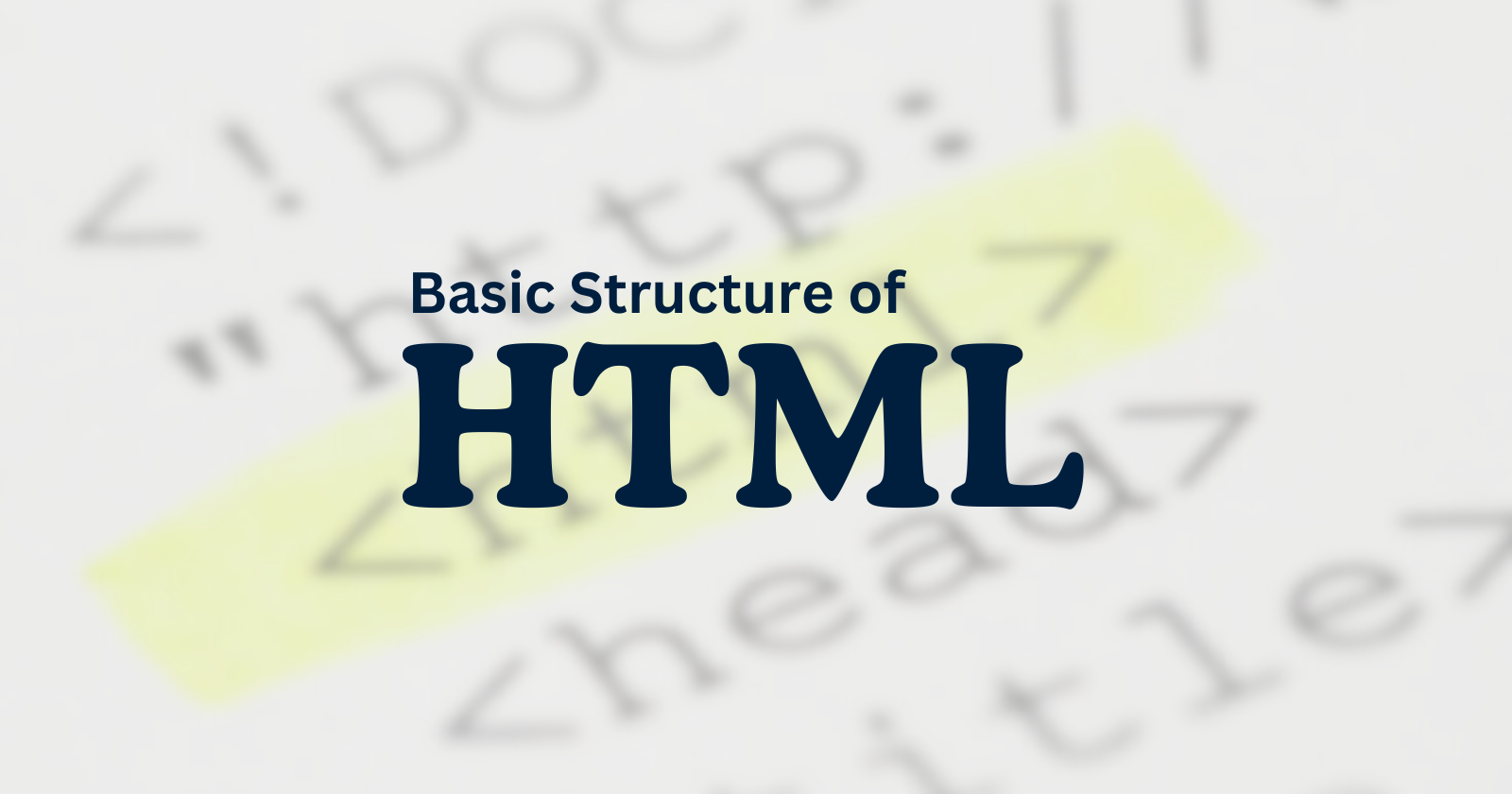Basic Structure of HTML Document
 Shubham Mergu
Shubham Mergu
Curious about the hidden language that shapes every webpage you visit? When starting out with web development, HTML (Hyper Text Markup Language) is the very first thing you encounter. It's the skeleton of every webpage on the internet, providing structure and meaning to the content. But, have you ever wondered what those lines of code like <!DOCTYPE html> or <head> mean? Let’s break down the basic structure of an HTML document in a way that makes sense and helps you build your first webpage with confidence.
Why Understanding HTML Structure is Key
Before diving into the nitty-gritty, imagine building a house. Without a blueprint, the house would collapse, right? Similarly, HTML provides a blueprint for browsers to interpret and display content correctly. Mastering the basic structure of an HTML document is like learning how to lay the foundation of that house—strong and stable!
Whether you’re building a simple static page or a dynamic web app, every HTML document follows a consistent structure. Let’s dig into this and get you started on the right foot.
The Doctype Declaration
The very first thing you’ll see at the top of an HTML document is the doctype declaration:
<!DOCTYPE html>
This might seem intimidating at first glance, but it’s simply there to tell the browser, “Hey, I’m writing in HTML5!” This declaration ensures that the browser interprets the document using the latest HTML version standards. Without it, browsers might revert to older quirks, leading to weird behaviors.
Think of it like setting the rules before a game begins—it’s a necessary step!
The <html> Tag
Immediately following the doctype, you'll encounter the <html> tag:
<html lang="en">
This tag wraps the entire content of the webpage and acts as the root element. Everything you see (and even what you don’t) is nestled within this tag. The lang="en" attribute simply tells the browser that the content is in English, which helps with accessibility tools like screen readers. If you’re coding a page in a different language, this is where you’d specify it.
The Head Section
Now, let’s talk about what goes inside this <html> tag. The first child is the <head> section:
<head>
<meta charset="UTF-8">
<meta name="viewport" content="width=device-width, initial-scale=1.0">
<title>My First HTML Page</title>
</head>
What’s inside the <head>? Let’s break it down:
<meta charset="UTF-8">: This tells the browser to use UTF-8, which is the standard character encoding. It means your page can handle a wide variety of characters, including special symbols, without breaking.<meta name="viewport" content="width=device-width, initial-scale=1.0">: This line is crucial for making your webpage responsive. It ensures that your page scales properly on mobile devices, making it mobile-friendly right out of the box!<title>: The title tag sets the text that appears in the browser’s tab when someone visits your site. It’s a small but important detail, giving your page an identity. Make it meaningful, because this is what shows up when people bookmark your page!
The <head> section might not hold visible content, but it's where important meta information and resources (like CSS and JavaScript) are placed. Think of it as the backstage area of your webpage, where all the critical preparations happen before the show starts.
The Body Section
Finally, the star of the show—the <body> tag:
<body>
<h1>Hello World!</h1>
<p>This is my first HTML page.</p>
</body>
The <body> section contains everything that’s visible to the user—the text, images, videos, and buttons that make up your webpage. It’s where all the action happens. Every HTML element that you see on the screen will be a child of the <body> tag. Here are two simple but essential tags:
<h1>: This is a heading tag, and<h1>represents the highest level heading. It’s like the title of your webpage, drawing attention immediately.<p>: A paragraph tag, which is used to wrap any text content. It’s perfect for blocks of text like the one you’re reading now!
Want to learn more about html tags? refer html tags
A Complete HTML Document Example
Now that we’ve walked through the individual pieces, here’s what the complete structure looks like when put together:
<!DOCTYPE html>
<html lang="en">
<head>
<meta charset="UTF-8">
<meta name="viewport" content="width=device-width, initial-scale=1.0">
<title>My First HTML Page</title>
</head>
<body>
<h1>Hello World!</h1>
<p>This is my first HTML page. I'm excited to build more!</p>
</body>
</html>
This is a minimal, but fully functional, HTML document. You can copy this, save it as index.html, and open it in any browser to see your first webpage come to life!
You’ve Got the Foundation!
Congratulations! You’ve just learned the basic structure of an HTML document. Understanding this structure is the key to building any webpage, no matter how complex or simple it may be. Once you’ve mastered this, the sky's the limit! Start by creating some basic pages, experiment with different elements, and soon, you’ll be crafting full-fledged websites.
What’s Next?
Now that you’ve mastered the basic structure of an HTML document, it’s time to make your pages interactive by learning about HTML Forms. Forms are the gateway to gathering user input, from login credentials to feedback and more. In the next blog, we’ll explore how to create powerful forms using input fields, buttons, dropdowns, and checkboxes. We’ll also dive into form validation, ensuring your forms are user-friendly and secure. Stay tuned for an exciting dive into one of the most essential tools for web developers!
Subscribe to my newsletter
Read articles from Shubham Mergu directly inside your inbox. Subscribe to the newsletter, and don't miss out.
Written by

Shubham Mergu
Shubham Mergu
Passionate & Hustler with 75% in B. Tech (E&TC). I'm a curious learner & I love to explore the world of programming.